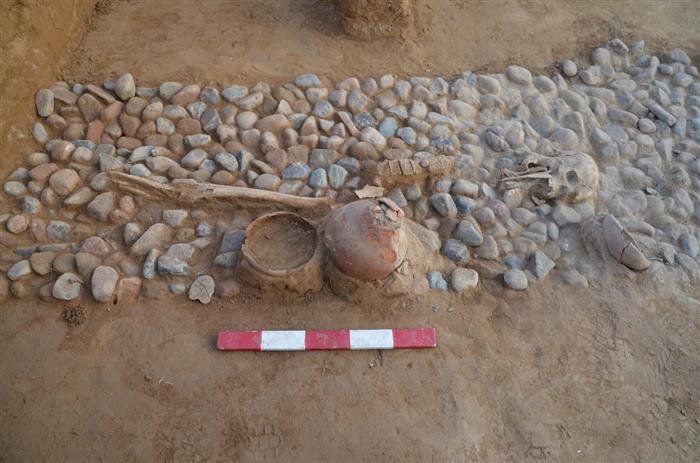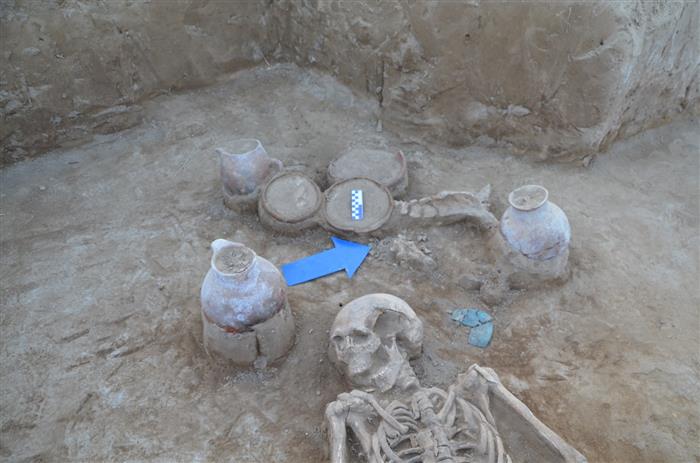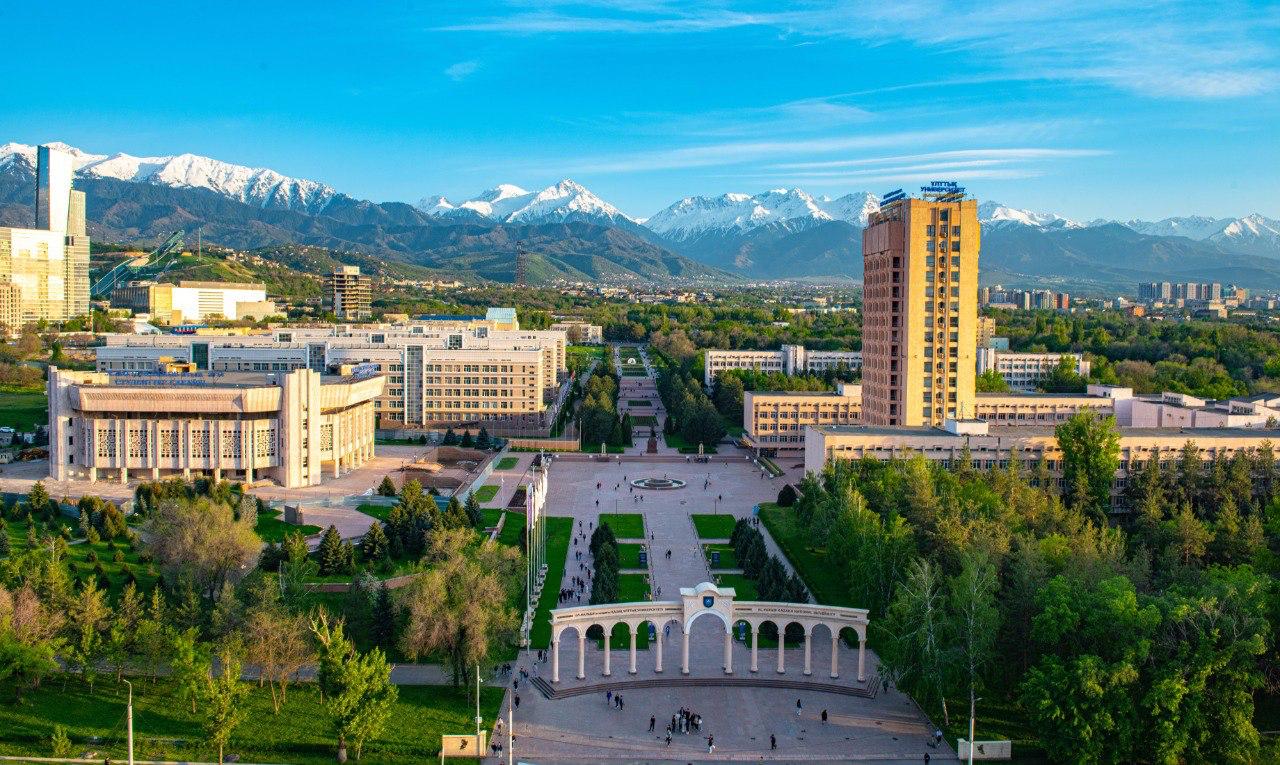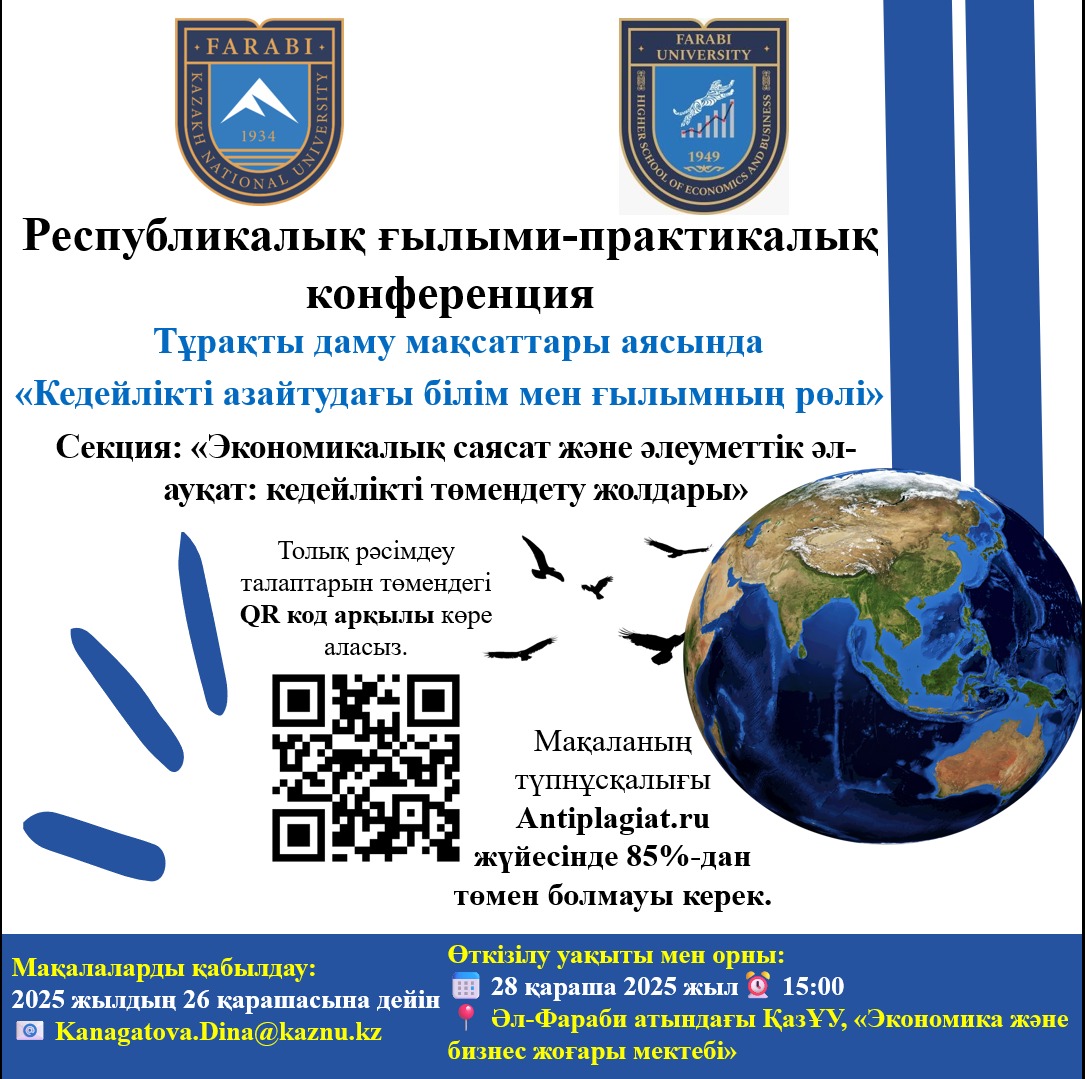KazNU archaeologists have discovered an Early Iron Age Crypt

The archaeological expedition of the Al-Farabi Kazakh National University under the leadership of Doctor of Historical Sciences, associate Professor Dosbol Baygunakov during excavations in the village of Zhanalyk, Talgar district, Almaty region, discovered a family crypt of the early Iron Age. Every find today is a historical document and confirmation of civilizations that existed before. Realizing the UN Sustainable Development Goals, KazNU scientists study the human past from the sources found. .
The research was carried out within the framework of the targeted funding program "Archaeological and historical-ethnographic study of the cultural heritage of the south-eastern and eastern regions of Kazakhstan (Shu-Ili area, Tarbagatai and Alakol basin)".
During the field work, a mound in the southern part of the village on the bank of the Malaya Almatinka River was investigated. The diameter of the mound is 30 m, height – 0.5 m. In the central part, at a depth of 1.2 m, two burials were found with differences in the funeral rite.
The first buried lay on a stone floor oriented from west to east. At the head of the buried there were animal bones, ceramic dishes in the form of jugs, low cups and bowls. A bronze mirror and a bead wrapped in gold foil were also found. On the left side of the buried were 3 ceramic products. A thieves' hole was found in the eastern part of the burial pit, which explains the absence of a part of the skeleton and the rest of the gold beads that formed a single decoration.

The second burial is located 1.5 m south of the first. It has no stone flooring, oriented from southwest to northeast. 6 ceramic vessels, animal bones, a knife, and a bronze mirror were found in the burial. On the skull itself there are fragments of gold foil – presumably parts of the decoration. Gold earrings with precious stones were also found near the skull, another gold bead. The buried person lies on his back, but the bones of the lower part of the body are missing. Also, an iron akinak (dagger), peculiar to the Sakas, and the remains of the golden coating of the scabbard were found at the right hand. One of the ceramic vessels with a double handle with a drain can be dated to the Uysun period.

Judging by the funeral rite, the burials were carried out at different times. According to the head of the expedition, there may be more burials under the mound. In the future, the mound will be fully explored. At the moment, all the findings are being investigated in a field laboratory. The archaeological complexes found testify to the material and spiritual culture of the ancient inhabitants of Zhetysu.
Other news


